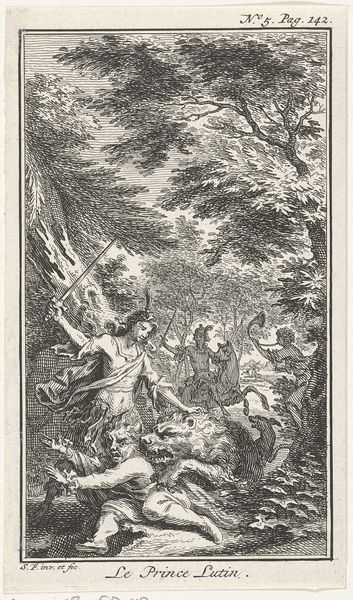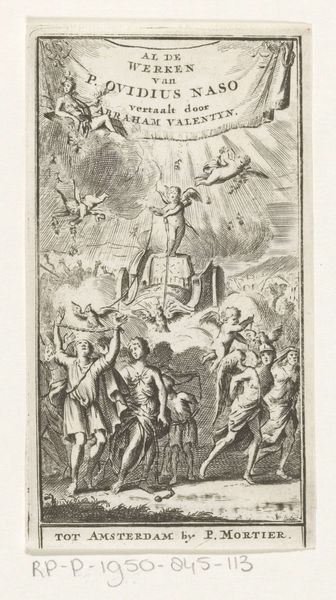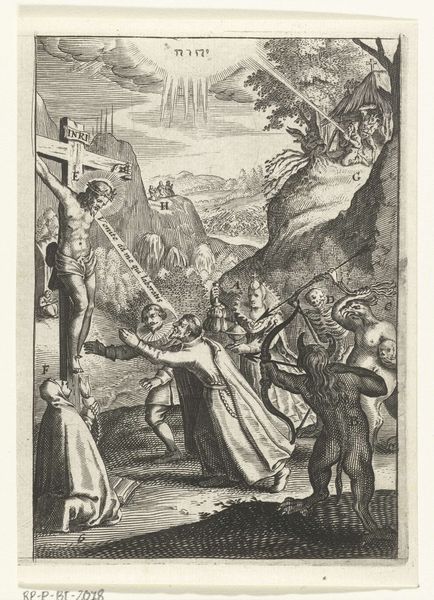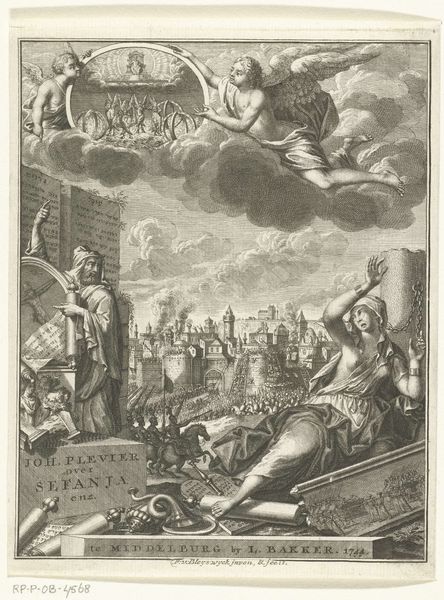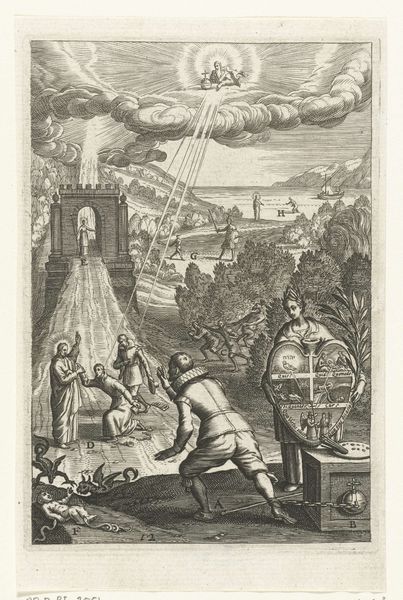
print, engraving
#
baroque
#
pen drawing
# print
#
pen illustration
#
pen sketch
#
landscape
#
pen-ink sketch
#
pen work
#
sketchbook drawing
#
history-painting
#
engraving
Dimensions: height 165 mm, width 90 mm
Copyright: Rijks Museum: Open Domain
Curator: Let’s discuss this fascinating engraving, "David bespeelt de harp," or "David Playing the Harp." It’s believed to have been created by Simon Fokke sometime between 1722 and 1784. Editor: Immediately, I’m struck by the strong dichotomy, and the density of detail. The heavenly realm feels incredibly populated and busy compared to the landscape below with the solitary figure of David. Curator: Precisely. Fokke's work reflects the visual conventions of the baroque era, particularly regarding religious themes and idealized landscapes. The artist, who lived through the Dutch Golden Age, was very influenced by both Dutch society, with a long trading tradition that favored commerce, law, philosophy, religious tolerance, and the arts. Editor: How fascinating to frame religious sentiment within those cultural developments. Is this the depiction of devotion he wants the world to emulate? Kneeling, cloaked, and cut off, David is a stark contrast to the choir he seeks to commune with. What does his solitude mean? Curator: One interpretation lies within the history of image making. During this era, prints served an important purpose. Their relative affordability, in comparison to paintings or sculptures, and their easy distribution allowed ideas and visual imagery to be disseminated across broader social segments. Editor: Right, so Fokke's prints provided ways for religious iconography to enter ordinary people’s homes, but did it invite the viewers to critically explore religious experiences or did it reinforce power structures within religious institutions? Look at the crown tossed off to the lower corner! It is the history of kingship under erasure, as an experience. Curator: That is very astute. The presence of that crown and other motifs would indicate a sophisticated, intellectual patronage class beyond that of the everyman and the engraving format lent itself to repeated copying and variation in private devotional art for centuries after Fokke. Editor: It does lead to more questions than answers about what devotion means and who has access to divine grace. What does resonate, though, is the sheer intensity of David’s hope, yearning upward in his playing. Curator: Ultimately, Simon Fokke leaves much open for us to think about—regarding belief, artistry, and how meaning travels through images across time.
Comments
No comments
Be the first to comment and join the conversation on the ultimate creative platform.



